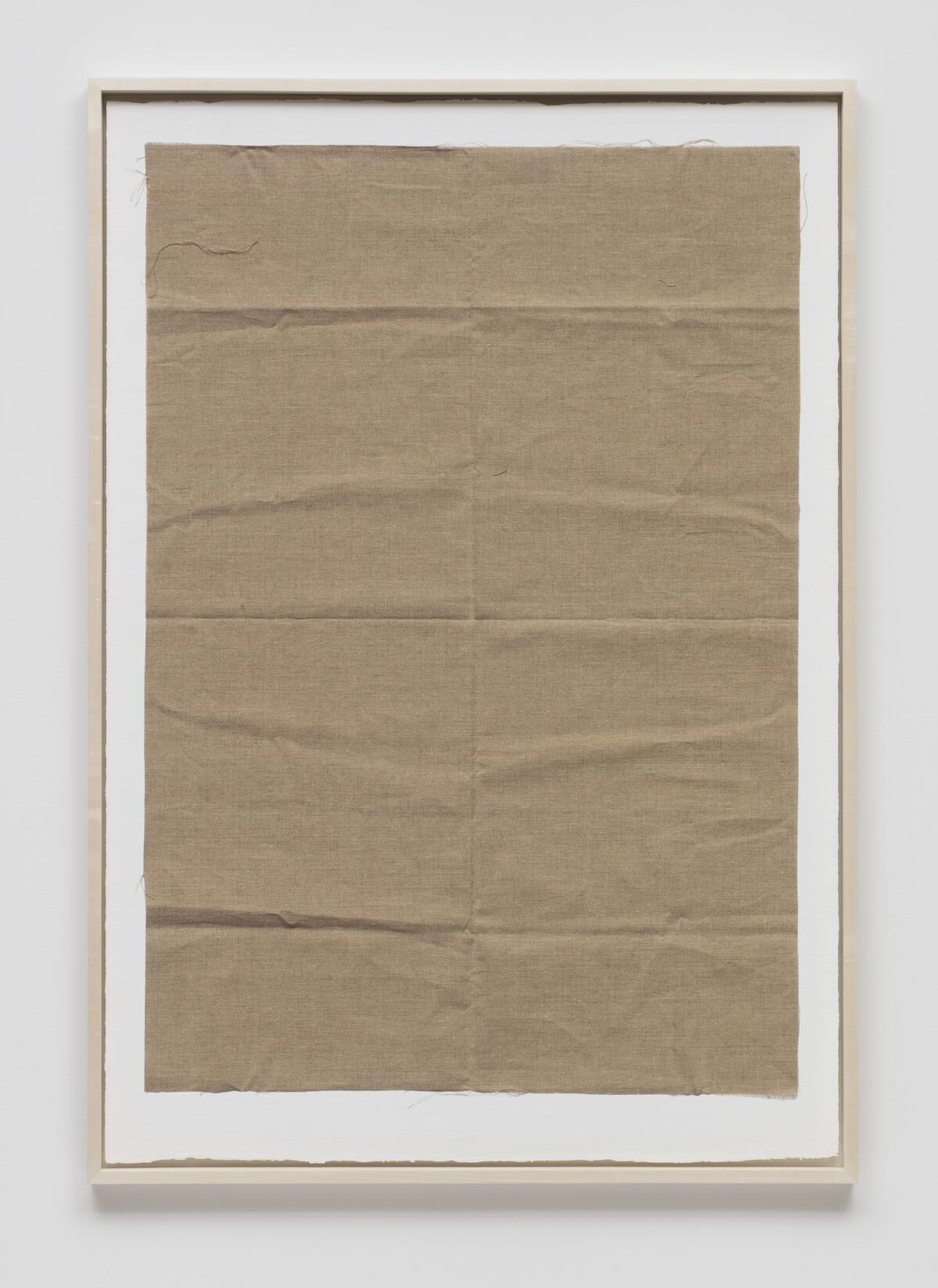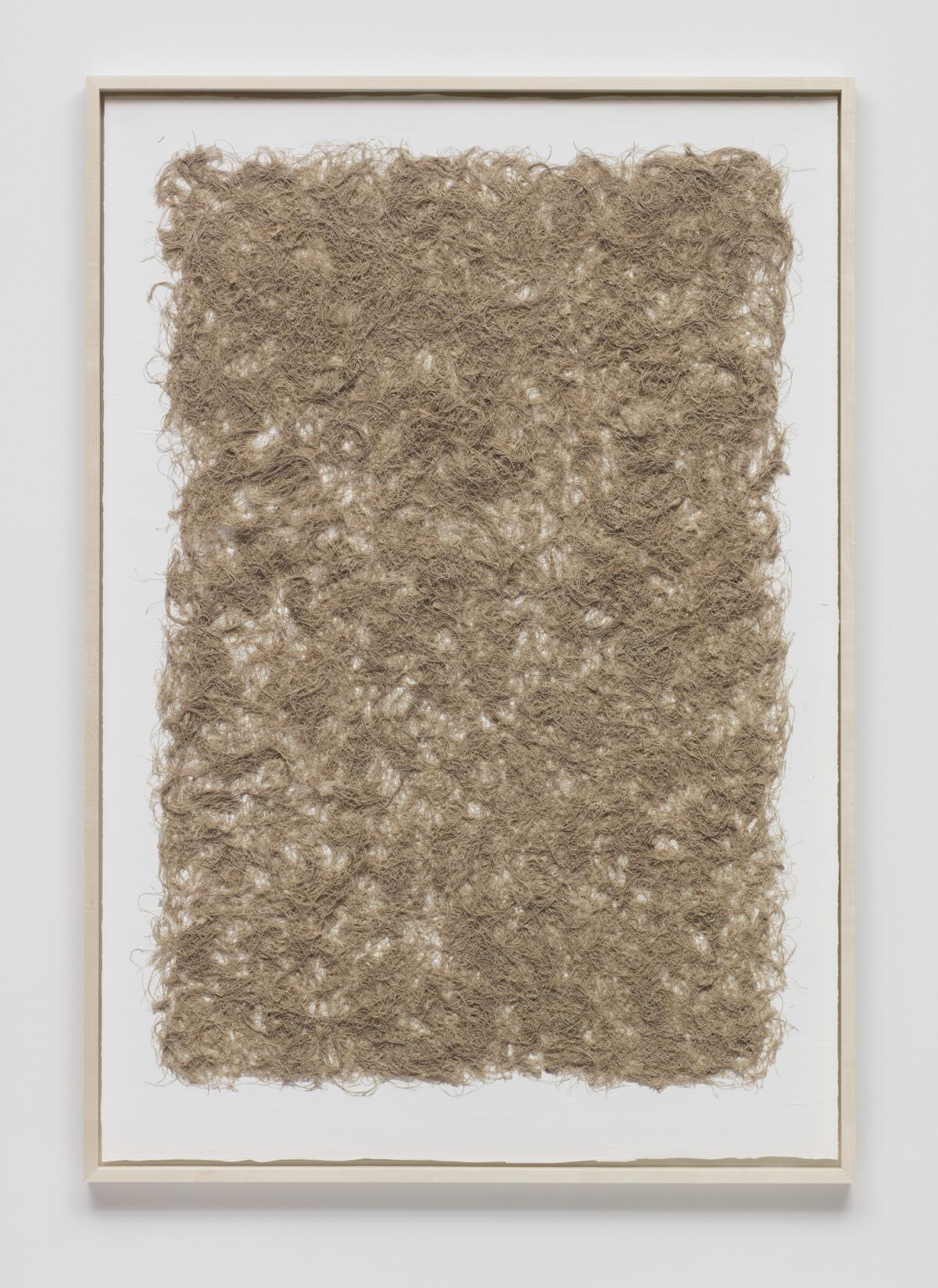Review: It’s not what it seems: Unraveling the secrets of Analia Saban’s ‘Threadbare’
- Share via
Analia Saban's work at Sprüth Magers gallery is curious and consuming from the very start, but for the most delicious, delirious, mind-bending experience, head upstairs.
"Threadbare (16 Steps)" is relatively quiet and unassuming. Its conceptual intricacies take time to unfold. While most of the other works strike with the immediacy of grenades, this one's power mounts, methodically.




FROM THE ARCHIVES: Analia Saban paints a different picture of success »
"Threadbare" consists of 16 large, framed panels that read like mounted pieces of fabric. They actually are photographic prints of a length of raw linen that changes from frame to frame. The white surface upon which the images are printed looks like paper but is instead acrylic paint that has been layered and dried to form a substrate. The inversion tickles: Each image is not paint on canvas; rather, it’s canvas on paint.
In the "Threadbare" sequence, the linen goes from wrinkled to pressed, from intact to frayed around the edges and pocked with holes. The edges continue to unravel and the holes become gashes, the liberated threads collecting in loose swirls on the now-broken surface. By the final frame, the tight weave has become thoroughly undone, transformed into a field of shorn, looping tresses. It's a wondrous hoot, a physics lesson (matter is neither created nor destroyed) and an art history teaser, touching down on Minimalism's spare seriality, Lucio Fontana's slashed canvases and

SIGN UP for the free Essential Arts & Culture newsletter »
Saban has made it her cunning practice to reconstitute painting and sculpture, to fiddle with foundations, essences and definitions, to take nothing for granted. In other work at Sprüth Magers, she folds thick slabs of concrete as though they were paper. She drapes them like pelts. The surfaces crack and break up coarsely where creased. These concrete pieces rest on beautifully crafted walnut pallets or sawhorses, skewering another expectation by fashioning an ostensible "support" more precious and refined than the sculpture resting upon it.
Born in Buenos Aires and based in L.A., Saban is consistently inventive with materials, but not everything that emerges from her lab-like studio ensnares mind and eye. A series of collaged paintings made of laser-sculpted paper and pleated ink, for instance, feels inconsequential. Her woven paintings, on the other hand, are a startling delight. In place of some warp or weft threads, Saban runs what look to be semi-solid stripes of dark paint through the loom. The glossy tubes of pigment bulge against the opposing threads, arteries literally and metaphorically circulating the paintings' lifeblood.
Sprüth Magers, 5900 Wilshire Blvd., L.A. Through Aug. 19; closed Sundays and Mondays. (323) 634-0600, www.spruethmagers.com
Support coverage of the arts. Share this article.
MORE FROM L.A.’S GALLERIES AND MUSEUMS:
Her quilts are made of 16-mm film. Here's what they reveal, frame by frame
Turning rhyme for the ears into rhythm for the eyes: It's 'Concrete Poetry' at the Getty
The Underdog on Post-it notes and other nostalgic bits, revived with a twist
A lowrider piñata bounces into the Petersen Automotive Museum
The biggest entertainment stories
Get our big stories about Hollywood, film, television, music, arts, culture and more right in your inbox as soon as they publish.
You may occasionally receive promotional content from the Los Angeles Times.







